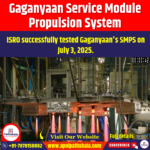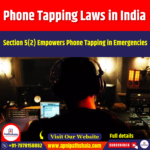GS Paper III: Achievements of Indians in Science and Technology, Space Technology |
Why in News?
Asteroid 2024 YR4: NASA has recently identified an asteroid named 2024 YR4, which is located near Earth. According to scientific calculations, there is a 1.5% chance of it colliding with Earth in the year 2032. Currently, it has become a significant topic in space research and Earth’s safety.
Information Related to Asteroid 2024 YR4
Astronomers study near-Earth asteroids (NEAs) to predict potential threats. In this context, a new asteroid, 2024 YR4, was discovered in December 2024, which could pose a potential risk to Earth in the future.
- Discovery Details:
- Discovery Date: December 27, 2024
- Discovery Location: ATLAS (Asteroid Terrestrial-impact Last Alert System) telescope station, Río Hurtado, Chile.
- Significance of Discovery: Initial calculations indicated that the probability of collision with Earth was greater than 1%, prompting global space agencies to conduct in-depth studies.
- Physical Characteristics:
- Diameter: Estimated between 40 to 100 meters
- Possible Composition: Scientific analysis suggests that this asteroid could belong to the S-type (Stony), L-type, or K-type rocky asteroid categories.
- Rotation Period: Completes one rotation on its axis in approximately 19.5 minutes.
- Orbital Characteristics:
- Orbits the Sun in an elliptical trajectory, classifying it as a Near-Earth Object (NEO).
- On December 25, 2024, it passed within 828,800 km of Earth (roughly twice the distance between Earth and the Moon).
- Next Close Approach: Expected to pass near Earth again on December 17, 2028.
- Scientific estimates suggest a 1.5% probability of collision with Earth in the year 2032.
- Potential Impact:
- If 2024 YR4 collides with a densely populated area, it could cause widespread destruction over a 20-50 km radius. However, if it falls into the open ocean, its effects will be limited.
- The impact could release 8 to 10 megatons of energy, making it nearly twice as powerful as the 2013 Chelyabinsk meteor, which caused extensive damage in Russia.
- Torino Scale Rating: NASA has assigned a rating of 3 on the Torino Scale for 2024 YR4. This indicates that it poses a potential threat to Earth and could have temporary effects on the local climate.
- Mitigation Efforts:
- The United Nations (UN) and international space agencies are actively studying such threats and formulating mitigation strategies.
- If future observations indicate an increased probability of collision, asteroid deflection or destruction strategies will be planned to prevent impact.
About the Torino Scale:
|
Asteroids: Definition, Origin, and Types
- Definition: Asteroids are small, rocky bodies that orbit the Sun. Their size can range from a few meters to hundreds of kilometers. They are primarily found in the Main Asteroid Belt, located between Mars and Jupiter, but some asteroids come close to Earth’s orbit, posing potential astronomical threats.
- Origin of Asteroids
- Remnants of Solar System Formation: It is believed that around 4.6 billion years ago, when the solar system was forming, some rocky materials failed to coalesce into planets and remained as asteroids.
- Gravitational Influence: Due to the gravitational pull of giant planets, especially Jupiter, these space rocks could not form a full-fledged planet and started moving in irregular orbits.
- Collisions and Fragmentation: Over time, asteroid collisions led to the formation of smaller fragments, contributing to the evolution of the main asteroid belt and other celestial structures.
- Types of Asteroids: Asteroids are classified based on their location and composition into three main categories:
- Asteroid Belt Asteroids: Located between Mars and Jupiter, this region contains millions of asteroids. The largest known asteroid here is Ceres, which has been reclassified as a dwarf planet.
- Trojan Asteroids: These asteroids share a stable orbit with a large planet and remain near its Lagrangian points (L4 and L5). Jupiter Trojans are the most numerous.
- Near-Earth Asteroids (NEAs): These asteroids have orbits that bring them close to Earth, and some even cross Earth’s orbit. NEAs are further divided into:
- Amor Asteroids: Do not cross Earth’s orbit but come close.
- Apollo Asteroids: Cross Earth’s orbit and pose a significant impact risk.
- Aten Asteroids: Have orbits within Earth’s orbit.
Key Characteristics of Asteroids
Asteroids differ from planets and other celestial bodies in terms of size, composition, motion, and orbital properties.
- Size and Shape: Asteroids range in size from a few meters to hundreds of kilometers. Most asteroids have irregular shapes because their gravitational force is not strong enough to make them spherical. Smaller asteroids often break into fragments due to collisions.
- Chemical Composition: C-type (Carbonaceous) Asteroids are most common type. These are rich in carbon-based materials and silicate minerals and considered ancient remnants from the early solar system.
- Orbital Characteristics: All asteroids orbit the Sun, but their trajectories are more irregular than planets. The gravitational effects of Jupiter and other planets can alter asteroid orbits, sometimes sending them toward Earth.
- Asteroid Moons: Some large asteroids have small natural satellites (moons). Example: The asteroid Ida has a moon named Dactyl. Some asteroids like Ryugu and Bennu have surface-bound small fragments held by their weak gravity.
Potential Threats to Earth from Asteroids
- Mass Destruction: Thousands of asteroids exist near Earth, categorized as Near-Earth Objects (NEOs). NASA and other space agencies continuously monitor these objects. Although the probability of a large asteroid collision with Earth is currently considered low, smaller asteroids can still cause significant damage. For example, in 2013, a 20-meter-wide meteor exploded in Earth’s atmosphere over Chelyabinsk, Russia, injuring over 1,500 people and damaging thousands of buildings.
- Tsunami Threat: If a large asteroid crashes into the ocean, it could trigger massive tsunamis. Scientists estimate that an asteroid 1 km or larger hitting the ocean could generate waves over 100 meters high, causing widespread destruction along coastal regions.
- Climate Change: An asteroid impact can cause massive explosions and fires, releasing large amounts of dust, ash, and debris into the atmosphere. This could block sunlight, leading to a significant drop in global temperatures. Scientists refer to this phenomenon as “Asteroid Winter.”
Scientific Studies and Asteroid Missions
- Asteroid Monitoring: With advances in science and technology, space agencies are now capable of precisely tracking Near-Earth Objects (NEOs).
- NASA’s “Near-Earth Object Program” has identified over 28,000 NEOs, including Potentially Hazardous Objects (PHOs).
- The European Space Agency (ESA) and other international institutions are working to enhance their monitoring systems using telescopes, radar, and satellites.
- The United Nations Office for Outer Space Affairs (UNOOSA) promotes global cooperation and manages the International Asteroid Warning Network (IAWN) to mitigate asteroid threats.
- India’s Role: The Indian Space Research Organisation (ISRO) is also making significant contributions to this global effort.
- ISRO has launched the “Network for Space Object Tracking and Analysis (NETRA)” to strengthen Space Situational Awareness (SSA).
- Additionally, India plans to develop a dedicated asteroid tracking system in the future to identify and analyze potential threats.
- Deflection Techniques: If a large asteroid is on a collision course with Earth, it must be deflected before impact. Scientists have developed several strategies for this:
- Kinetic Impact: NASA’s DART (Double Asteroid Redirection Test) Mission in 2022 successfully tested this technique. A spacecraft was deliberately crashed into the asteroid Dimorphous, altering its orbital path.
- Nuclear Detonation: In extreme situations, a nuclear explosion could be used to destroy or deflect an asteroid. However, this is considered a last resort because a blast might break the asteroid into multiple fragments, potentially causing more damage.
UPSC Previous Year Question (PYQ) Question (2011): What is the difference between asteroids and comets?
Which of the above statement(s) is/are correct? (a) Only 1 and 2 Answer: (b) |
Explore our Books: https://apnipathshala.com/product-category/books/
Explore Our test Series: https://tests.apnipathshala.com/









